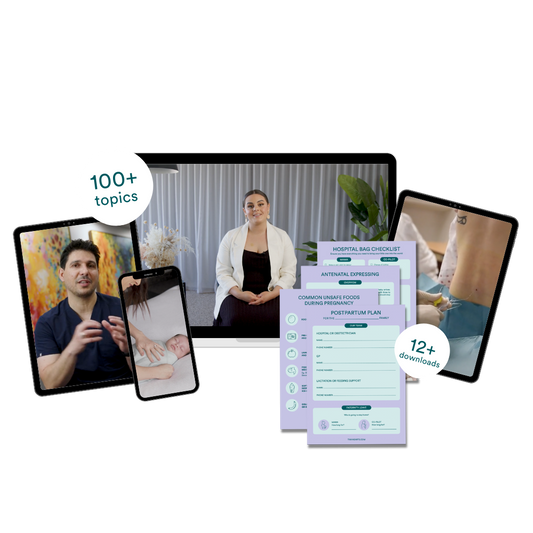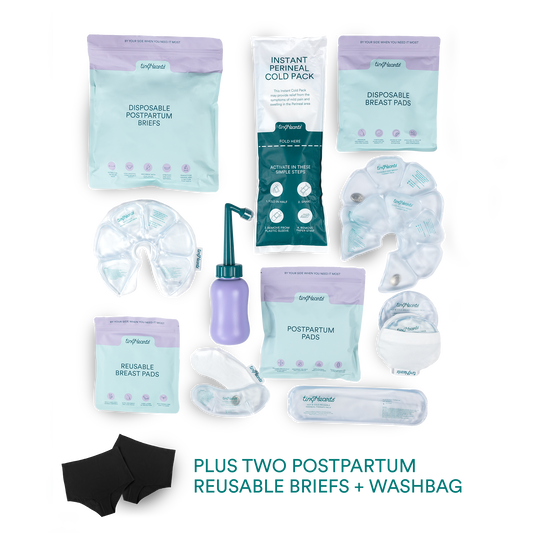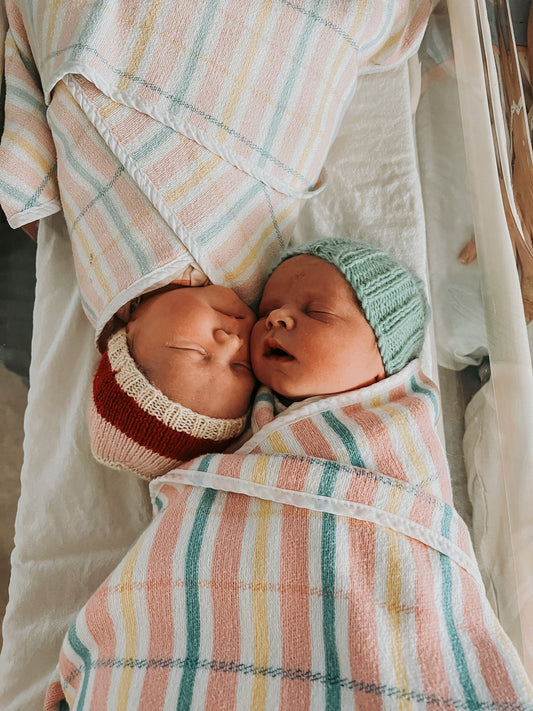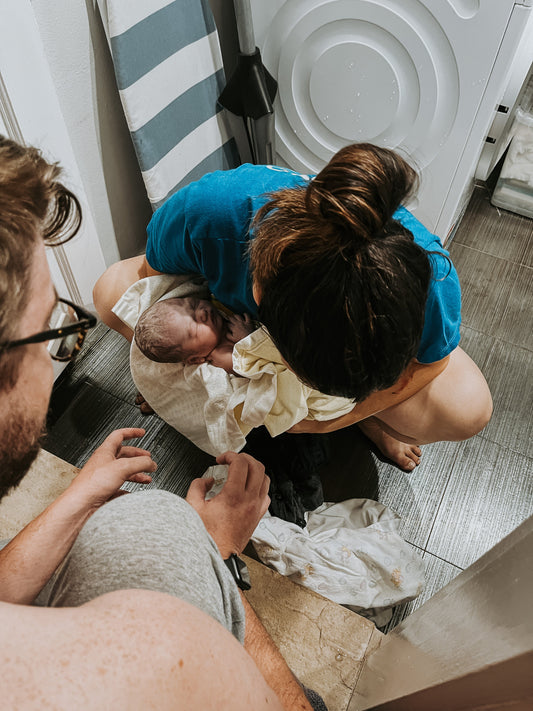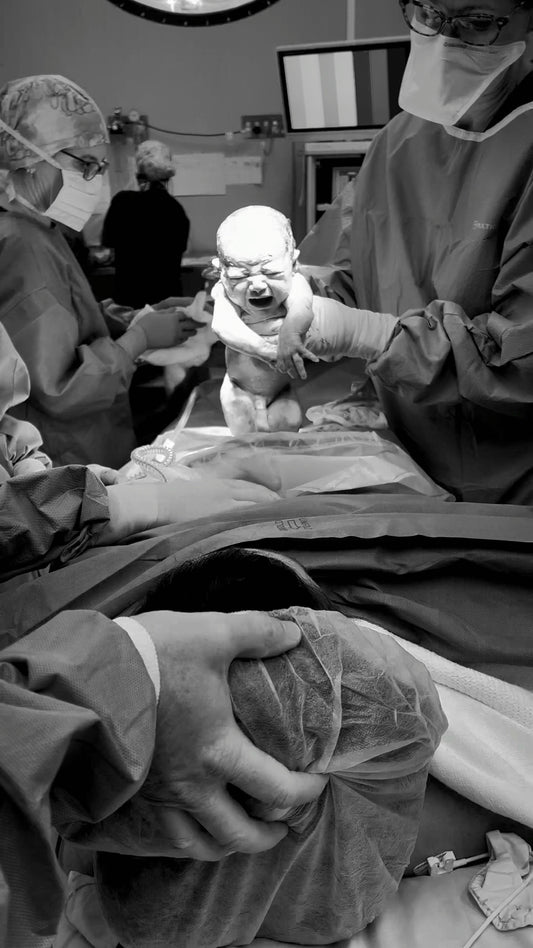The Top 10 Tips You Need to Know Heading into Summer
There's so many things to think about and so many things you need to know as a parent, particularly in Summer. To help you out, we've written them into a blog. Think of it as your 'Summer Survival Guide".
1. Spraying water from the hose directly on someone before letting it run cool first can cause significant burns
The water inside a garden hose can heat up quickly to between 55-60 degrees in the summer sun when not running. It takes just ONE SECOND to cause full-thickness burns at 60 degrees and TEN SECONDS at 55 degrees.
So remember, when you're outside with your little ones and are planning to use the sprinkler or hose to cool off, run the water on the grass until the water runs cold before spraying yourself or your bub.
If your little one sustains a burn that is:
- bigger than 3cm
- to the face, throat, genitals, hands or airway
- deep or blistering
- concerning you
Call 000 and cool the burn with cool running water for 20 minutes while you wait. Read up on our burns blog, or even better, book into our baby first aid course to learn what you need to do next to manage and treat your bub's burn.
And if you think this would never happen, it already has. In 2016, a 9mo boy was accidentally burned when his mama started filling a paddling pool he was sitting in with water from the hose. The mama turned the hose on, not realising the water inside had heated up from the sun, and bub sustained significant burns from the hot water inside the hose.

2. Covering your pram with a blanket dramatically increases the temperature inside the pram
As the weather heats up, prams can become as dangerous as hot cars.
Our natural instinct is to cover our pram to minimise the sun, but this can reduce airflow and increase the temperature in the pram underneath the blanket, quickly making it too hot for bub. We ran an experiment to work out just how quickly a pram covered by a blanket can heat up and how much the temperature would rise. To do this, we put a thermometer in a pram with a baby doll, covered the pram like many parents do with a light muslin wrap and left it in the sun.
Shockingly, the temp inside the pram started at 21.4 degrees, and in just one hour of being covered by a blanket in the sun, the temp inside the pram rose to 35.4!!! That's a rise of 14 degrees in one hour!
Now imagine if you had a sleeping baby in there!
3. Sunscreen + preventing sunburn
Your little one has delicate and sensitive skin that burns quickly + easily. The more sun exposure at an early age, the greater the chance of skin cancer later in life.
So to protect our young babies best, we would do all of these things first:
- Cover as much skin as possible with lightweight clothes or a wrap
- Wear a wide-brimmed hat that covers the face, ears + back of the neck
- Use baby sunnies for their little eyes
- Seek out and stay in the shade
For little ones, the last line of defence is sunscreen. The Australasian College of Dermatologists doesn't recommend sunscreen use on bubs under 6m because their skin is highly absorbent.
Always apply sunscreen:
- 20 minutes before sun exposure, again 30 minutes later and repeat every 2 hours [regardless of package instructions, particularly if swimming]
- Generously - most people use too little
When choosing a sunscreen for older bubs, kiddos and yourselves, look for a sunscreen that is:
- SPF 30 or higher [50+ is the best]
- Water-resistant and board spectrum - offers the best protection
- Must be TGA approved - if the website doesn't say 'TGA approved L: followed by a number, do not buy it
- Developed explicitly for little ones; they will be less harsh
Sensitivities to sunscreen can range from mild to severe. Always patch test the sunscreen on a small area of your bub's skin to check for any reactions before applying it all over. If a reaction occurs, immediately wash off.
4. sunburn treatment
Sunburn is a radiation burn to the skin. Signs that your bub has been burnt can start to appear quickly, and their skin will start turning red and develop over a 2 - 6 hour period, and sometimes even up to 72 hours later. The severity of the sunburn will depend on treatment and also healing time; it might be managed at home or by a doctor and may take days or weeks to heal. There is no cure once you bub gets burnt, it takes time and patience [and lots of cuddles]. The treatment aims to make your little one more comfortable while the body heals.
What you should do:
- Encourage lots of fluids, time in the sun can lead to dehydration
- Run a flannel under cool water and gently place on the burn [don't leave on for more than 10 minutes as little ones can become cold quickly]
- Chat with a pharmacist about products that will help soothe and aim for a spray-on (rubbing will hurt) like aloe vera or witch hazel
- Moisturiser won't stop peeling but will help the skin under heal, but make sure sunburn is cool to touch prior to applying
- Ibuprofen or paracetamol will help with pain; ibuprofen will also help with swelling
- Never pop blisters or apply butter
See a doctor or seek treatment from the nearest hospital emergency department if bub has:
- Severe sunburn with blistering and pain
- Sunburn over a large area
- Your little is confused, acting strange, is lethargic, has a high temp or is vomiting

5. bluebottle stings
Bluebottles are often mistaken for a type of jellyfish, but they're not. They are actually classified as a Siphonophore. They're commonly found outside of the tropics on the East coast of Australia during the warmer months and in the south of Western Australia during the cooler months.
There are around 10,000 reports of bluebottle stings every year in Australia alone.
Most people experience mild-moderate symptoms, such as:
- Blue tentacles found on the body
- Immediate, sharp pain
- Skin reaction in the shape of a tentacle
If you or your little one is stung by a bluebottle, you should:
- Exit the water to prevent being stung again
- Remove the tentacles with tweezers, seawater [as freshwater can make the sting worse] or by hand [wearing gloves]
- Call 000 if the sting is to a large part of the body, the face, neck, throat, or your little one is showing concerning signs such as difficulty breathing, altered conscious state or extreme pain
- Apply, or immerse your little one in hot water [as hot as they can tolerate without burning]
- If hot water isn't available, consider using heat packs on the area
- Avoid applying alcohol or vinegar to bluebottle stings; only jellyfish stings as it can make the sting worse
- Avoid rubbing the area
- Seek assistance from the lifeguards
6. kids in hot cars
Kids passing away from being locked in hot cars is an uncomfortable topic, but it needs to be spoken about because it's preventable.
One of the most devastating parts about it is that it can happen to even the most loving, attentive parents, who are sleep deprived, distracted or have experienced a change in routine.
When locked in a hot car, the biggest risk is life-threatening heatstroke, which happens when the body is not able to cool down quickly enough. Even on cool or cloudy days or when parked in the shade, cars can heat up quickly, regardless of their size, colour or if the air conditioning was on previously. Even opening a window slightly doesn't prevent a car from heating up.
When it's hot weather, inside the car can be up to 40 degrees hotter than the temp outside. When it's cold outside, inside the car can be up to 20 degrees hotter. In both cases, most of the increase in temperature occurs in the first five minutes.
To try and prevent this tragedy, try using the CARSS acronym Tiny Hearts has created.
Coach: teach your little one that we don't play in or around cars.
Alert: try and minimise distractions when driving as this is often when parents forget they have a little one in the car with them.
Routine: create a routine of always checking the backseat before exiting the car and following up with whoever dropped bub off if their routine was different on this day. It's also a good idea to create a system with bub's daycare that they'll call you if bub hasn't arrived by a certain time each day.
Stow: Leave your bag on or under the backseat to force you to look back, and keep your keys up high and out of sight when not in use.
Send for help: If you see a little one stuck in a hot car, send for help immediately by calling 000.
If bub is unintentionally locked in a car or you see any child unattended in a car, call for help straight away. If they look hot, distressed or unconscious, call 000 immediately and follow their instruction.

7. drowning
Did you know that there is no age that is considered safe for anyone to swim unsupervised or alone? Or that drowning doesn't just happen in a pool; it can happen in seconds in as little as 30cm of water? What about the fact that 2022 has the highest amount of deaths caused by drowning in over 25 years? Or that kids under 5 are at the highest risk of accidental drowning?
What about the fact that drowning occurs in swimming pools only 52% of the time? And only 16% occurs in baths or spas? As for the remaining 32%?
The remaining 32% of drowning occurs in drowning hazards you probably haven't considered, such as:
- Fish ponds
- Eskies
- Pet water bowls
- Buckets
- Animal troughs
- Irrigation channels
- Rainwater tanks
Here are the things we do in our house to minimise the drowning risk to our little ones:
- Store sink and bath plugs up high and out of reach, or inside the locked medicine cupboard
- Actively supervise the entire time when in the bath or shower
- Keep locks on the toilets
- Regularly check to make sure the pool gate is secure and closes properly
- Use a small dog water bowl that we fill up regularly instead of a big one
- Store all buckets and eskies upside down
- Store our fish tank up high and out of reach, even with a chair
- Educate them on why it's important not to enter the pool alone
- Know baby + child CPR and what to do in the event of a drowning
8. symptoms of a snake bite + what to do
We often get the question, if we're playing in the garden/ at the park/ on the property, and my little one gets bitten by a snake, how will I know?
Firstly, it's important to know that snake bites may not always leave visible marks. So you need to also consider any signs + symptoms and what your little one is telling you.
Signs + symptoms:
- Confusion
- Pain at the bite site [but may also be painless]
- Bite markings - scratch, single mark or a pair of fang marks [which may not always be present]
- Nausea + vomiting
- Difficulty speaking, swallowing or breathing
- Muscles weakness or paralysis
- Vision changes or drooping eyelids
- Completely stopping breathing
- Collapse
The majority of snake bites are dry bites [when no venom is injected], but there's no way to tell a dry bite from a venomous bite, so all snake bites are treated as venomous until proven otherwise. If you suspect a snake bite or your little one is telling you a snake has bitten them, it's important to keep them still, call 000 and provide the correct first aid treatment [Pressure Immobilisation Technique].
9. how to spot a rip at the beach
If you're like us, we love taking our little ones to the beach. But there are lots of different hazards at the beach. If entering the water, you need to keep an eye out for and avoid rip currents.
Rips are underwater currents that move water away from the shore and head back out to sea. They can be dangerous, as they may be strong, fast-moving, take you out a long way from the shore, and difficult to escape once caught.
To spot a rip, look for:
- Deeper or darker water
- Areas where there are fewer breaking waves [people often enter these areas because they appear calmer]
- Dark gaps between the waves
- Fast moving water
- Sandy coloured water beyond the surf zone
TIP: Spotting rips can sometimes be tricky. If you're unsure, look for where the waves break continuously, then look to each side to see if there is a spot where they don't break [these are rips].

10. dehydration
As the weather heats up, little ones are more prone to dehydration. One of the things we look at when it comes to dehydration in little ones is wet nappies.
Wet nappies can be a great indicator of your bub's wellness and hydration status. That's why whenever you take your doctor to a health provider, one of the first things they ask you about is wet nappies. They'll ask how many wet nappies your bub is having in 24 hours, how wet the nappies are [e.g. soaked/ damp], the colour of urine and if there's a smell.
What's normal?
On the first day of life, your bub should have one wet nappy. On day two; two wet nappies. Day three; three. Day four; four. From day five onwards, your little love should have at least five very wet disposable nappies or six very wet cloth nappies in 24 hours. Nappies should be odourless and clear/pale in colour.
What's not normal?
- Strong smelling urine
- Dark coloured urine
- Fresh blood in the nappy
- Urates in the nappy on or after day 4 [which look like rust marks]
- Fewer nappies than the amount stated above
- Other signs of dehydration or illness like lethargy, sunken fontanelle or confusion
Severe dehydration signs are drowsiness, extreme thirst, absent tears when crying, lethargy, a sunken fontanelle, irritability/ confusion, cold hands/ feet or breathing fast with a fast heart rate. These signs require immediate medical attention.
If your bub has signs of mild dehydration, like fewer wet nappies, increase the amount of breast or formula feeds [if possible] by offering the breast or bottle as often as you can. In older toddlers or kids who are no longer exclusively breastfeeding/ formula feeding, try offering cold or warm drinks, icy poles or foods with high water content like watermelon. Don't worry too much if they don't want to eat, though; your focus should be on hydration.
It can be tricky to know when to get medical attention. A dehydrated bub can become unwell quickly, so if your little one shows signs of dehydration and refuses to drink any more liquids, seek medical attention. Remember: severe signs require immediate medical attention.
I hope this helps you prepare for summer, armed with the info to advocate for and treat your precious Tiny Heart. For more life-saving info, book into our Baby + Child First Aid course and let us teach you everything we know.
In the original post, I'd love to hear about your top tips for Summer. Tag your loved ones while you're there. ☀️
Helping you feel prepared for parenthood is what Tiny Hearts is all about. Book into our baby + child first aid class, and let us empower you to face parenthood without fear. 💗
online baby & child first aid
$145
Learn baby & child first aid from your device at home! Purchase now and learn right away.
Our instant access course includes over 38 videos and 15 bonus downloads including content on whooping cough, croup and more!


